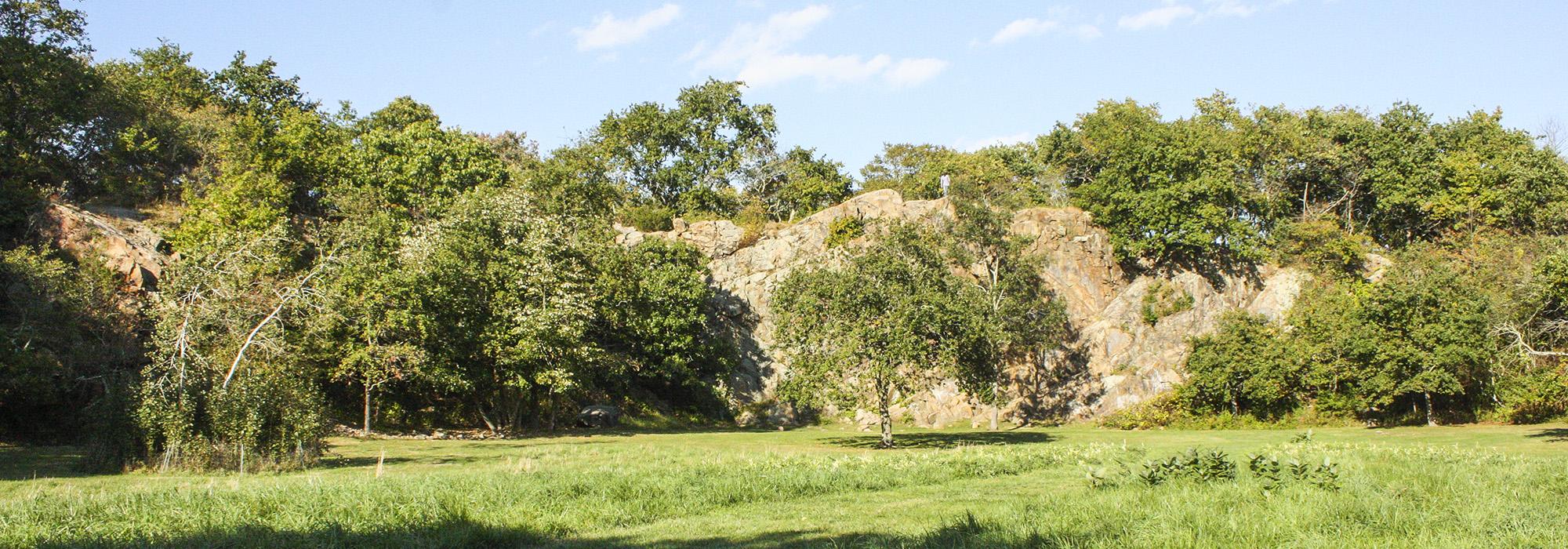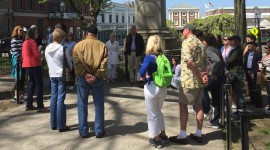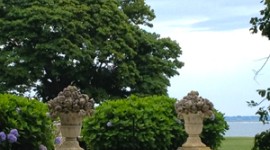Seeking to preserve a large swath of undeveloped land south of central Newport, in 1990 Carol Ballard donated this thirteen-acre parcel to the City. At the same time she sold the abutting 54-acres and placed a conservation easement on the property, creating a wildlife refuge. Once the site of active granite quarries, which from the 1800s to the 1930s provided stone for nearby roads and houses, Ballard stipulated that the park should be used for passive recreation, education, and conservation. Five distinct trails circulate for just over a mile through the park’s dense woodlands and ravines, often converging and occasionally ascending to skirt exposed rock faces. Boardwalks cross seasonal streams and wetlands where red swamp maples have taken root; elsewhere a grove of native chokecherry indicates the site of a former pasture. Evidence of quarrying can still be seen throughout the park, whose varying topography is observable from three scenic overlooks. Atop a sheer, 30-foot cliff, Quarry Overlook provides views of the Atlantic Ocean and the three-acre Quarry Meadow below, with its grasses, wildflowers, and grove of quaking aspen. Surrounded by Norway maples, the meadow is the setting for a half-acre, constructed, vernal pond. Notably, eight species of ferns can be found within the park, which is also geologically diverse, with examples of all three basic rock types—igneous, metamorphic, and sedimentary—in evidence. Its habitat supports deer, coyote, rabbits, squirrels, and other animals, which also move freely into the neighboring wildlife refuge that includes Goose Neck Cove. Since 1996 the non-profit Friends of Ballard Park has worked with the City to maintain, improve, and promote the park.















